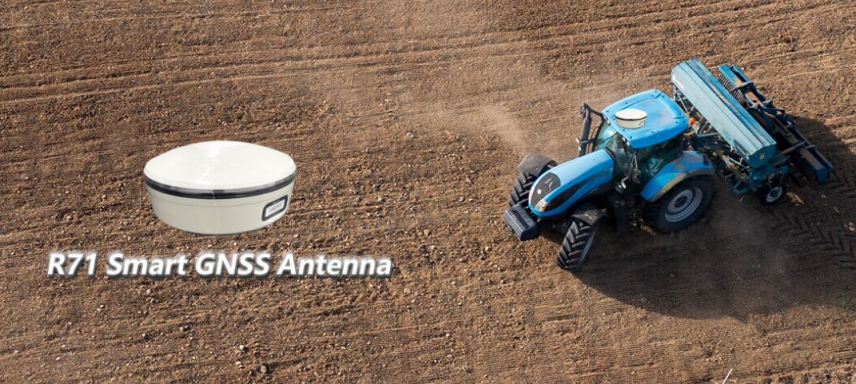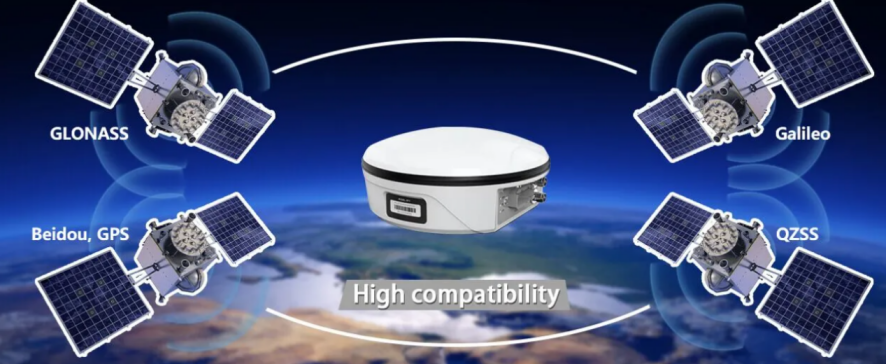Explore how to farm GPS guidance systems are revolutionizing agriculture through precise technology. Discover the advantages, including enhanced crop yields, cost savings, and sustainable farming methods. Learn about features such as auto-steering, variable rate application, and data management, streamlining field operations. Unveil their compatibility with diverse farm equipment and potential for government support. Delve into the accuracy and effectiveness of these systems, their role in profitability, and environmental sustainability. Stay informed about the evolving landscape of GPS technology in agriculture, ensuring you remain ahead in the digital era of farming.
Introduction to Farm GPS Guidance Systems
1.1 Definition and Purpose
Farm GPS guidance systems, an integral part of precision agriculture, utilize satellite technology to provide accurate positioning and guidance for various farm operations. These systems are designed to assist farmers in optimizing their fieldwork, from planting and spraying to harvesting. By leveraging GPS technology, farmers can achieve greater accuracy and efficiency in their tasks, ultimately enhancing productivity and sustainability in modern agriculture.
1.2 Evolution of GPS Technology in Farming
The integration of GPS technology into farming practices has revolutionized the agricultural industry over the past few decades. Initially, GPS systems were primarily used for navigation and mapping purposes. However, with advancements in technology and the introduction of precision agriculture concepts, GPS guidance systems have become indispensable tools for farmers worldwide. Today, these systems offer highly accurate positioning capabilities, enabling farmers to precisely control their equipment and operations with minimal human intervention.
1.3 Importance of Precision Agriculture
Precision agriculture, enabled by GPS guidance systems, plays a crucial role in modern farming practices. By utilizing data-driven insights and technology, farmers can optimize their use of resources such as water, seeds, fertilizers, and pesticides. This targeted approach not only maximizes crop yields but also minimizes environmental impact and reduces input costs. Precision agriculture is essential for meeting the growing global demand for food while ensuring sustainable farming practices for future generations.
Benefits of Implementing GPS Guidance Systems on Farms
2.1 Increased Efficiency and Productivity
One of the primary benefits of GPS guidance systems on farms is the significant increase in efficiency and productivity. By precisely guiding farm machinery along predetermined paths, farmers can minimize overlaps and gaps in field operations, resulting in optimized use of time and resources. Tasks such as planting, spraying, and harvesting can be completed more quickly and accurately, allowing farmers to cover more ground in less time.
2.2 Reduction in Input Costs
Implementing GPS guidance systems can lead to substantial savings in input costs for farmers. By eliminating unnecessary overlaps and reducing waste, farmers can lower their usage of fuel, seeds, fertilizers, and pesticides. This not only translates to direct cost savings but also contributes to sustainability by minimizing the environmental impact of farming activities. Additionally, by optimizing field operations, farmers can extend the lifespan of their equipment and reduce maintenance costs over time.
2.3 Improved Accuracy in Field Operations
GPS guidance systems provide farmers with unparalleled accuracy in their field operations. By precisely mapping field boundaries and contours, farmers can ensure uniform coverage of inputs and minimize errors in application rates. This level of precision is especially critical for tasks such as planting and spraying, where even minor deviations can have significant impacts on crop performance. With GPS guidance, farmers can achieve consistent results across their fields, leading to better crop yields and profitability.
2.4 Environmental Benefits
The adoption of GPS guidance systems also brings about environmental benefits for farms. By minimizing the use of agrochemicals and reducing soil compaction through optimized field operations, farmers can mitigate the environmental impact of their activities. Moreover, by implementing precision agriculture practices, such as variable rate application, farmers can target inputs more efficiently, reducing the risk of nutrient runoff and soil erosion. These environmental benefits not only contribute to sustainable farming practices but also help preserve natural resources for future generations.

Types of Farm GPS Guidance Systems
3.1 RTK (Real-Time Kinematic) GPS Systems
RTK GPS systems offer the highest level of accuracy and precision available in farm guidance technology. By using a fixed base station and transmitting corrections in real-time to the receiver onboard farm machinery, RTK systems can achieve centimeter-level accuracy in positioning. This level of precision is essential for tasks such as planting row crops and performing detailed field operations where accuracy is paramount.
3.2 Autonomous Tractors and Machinery
Autonomous tractors and machinery represent the future of farming automation, enabled by GPS guidance technology. These advanced systems use GPS positioning and onboard sensors to navigate fields and perform various tasks without direct human intervention. By eliminating the need for a human operator, autonomous equipment can work around the clock, optimizing productivity and efficiency on the farm.
3.3 Integration with Precision Farming Software and Equipment
Farm GPS guidance systems can be seamlessly integrated with precision farming software and equipment to further enhance their capabilities. This integration allows farmers to access real-time data on field conditions, weather patterns, and crop performance, enabling informed decision-making and optimized farm management. By combining GPS guidance with other precision agriculture technologies such as yield monitoring and variable rate application, farmers can maximize their operational efficiency and profitability.
Key Features and Components of Farm GPS Guidance Systems
4.1 GPS Receivers and Antennas
At the heart of any farm GPS guidance system are the GPS receivers and antennas. These components are responsible for receiving signals from satellites orbiting the Earth and determining the precise location of farm machinery in the field. Modern GPS receivers utilize advanced technology to achieve high levels of accuracy, allowing farmers to perform tasks with precision and efficiency.
4.2 Guidance Displays and Controllers
Guidance displays and controllers serve as the interface between farmers and their GPS guidance systems. These devices provide real-time feedback on field operations, including guidance paths, boundaries, and coverage maps. Farmers can use guidance displays to monitor progress, make adjustments on the fly, and ensure that tasks are completed accurately and efficiently.
4.3 Auto-steering Systems
Auto-steering systems automate the steering of farm machinery, allowing for precise guidance along predetermined paths. By eliminating the need for manual steering, these systems reduce operator fatigue and ensure consistent accuracy in field operations. Auto-steering capabilities are particularly valuable for tasks such as planting, spraying, and harvesting, where straight and uniform rows are essential for optimal crop performance.
4.4 Section and Rate Control Capabilities
Many GPS guidance systems offer section and rate control capabilities, allowing farmers to precisely manage inputs such as seeds, fertilizers, and pesticides. Section control enables farmers to automatically turn individual sections of equipment on or off based on predefined boundaries, minimizing overlaps and reducing waste. Rate control allows for variable application rates based on factors such as soil type, crop density, and nutrient requirements, optimizing resource utilization and maximizing crop yields.
4.5 Data Recording and Analysis Functionalities
Farm GPS guidance systems often include data recording and analysis functionalities, allowing farmers to collect and analyze valuable information about field operations. These systems can record data such as coverage maps, application rates, and yield data, providing insights into crop performance and field variability. By analyzing this data, farmers can make informed decisions about agronomic practices, input optimization, and overall farm management strategies.
Case Studies: Successful Implementations of GPS Guidance Systems
5.1 Real-world Examples of Farms Utilizing GPS Guidance Systems
SMAJAYU GPS guidance systems have been successfully implemented on farms around the world, helping farmers achieve greater efficiency, productivity, and profitability. For example, a large-scale corn farm in the Midwest United States adopted SMAJAYU GPS guidance technology to streamline planting operations. By utilizing auto-steering systems and section control capabilities, the farm was able to reduce overlap and optimize seed placement, resulting in higher yields and reduced input costs.
5.2 Testimonials from Farmers on the Benefits and Impact of Adopting GPS Technology
Farmers who have implemented SMAJAYU GPS guidance systems consistently praise the benefits of the technology. One farmer in Canada remarked, "Since installing SMAJAYU GPS guidance systems on our farm, we've seen a significant improvement in efficiency and accuracy. Tasks that used to take hours can now be completed in a fraction of the time, with minimal wasted resources. Our yields have increased, and our bottom line has improved as a result."
5.3 Comparative Analysis of Farms Before and After Implementing GPS Guidance Systems
A comparative analysis of farms before and after implementing SMAJAYU GPS guidance systems reveals compelling results. Farms that have adopted the technology consistently report higher yields, reduced input costs, and improved overall farm profitability. By leveraging the precision and efficiency of GPS guidance, farmers can maximize their return on investment and sustainably manage their operations for long-term success.

Future Trends and Innovations in Farm GPS Guidance Systems
6.1 Advancements in GPS Technology and Precision Agriculture
As GPS technology continues to evolve, we can expect further advancements in farm GPS guidance systems. These advancements may include improved accuracy, faster data processing, and enhanced connectivity with other farm equipment and software platforms. Additionally, ongoing developments in precision agriculture techniques, such as variable rate application and remote sensing, will further enhance the capabilities of GPS guidance systems and enable farmers to achieve even greater levels of efficiency and productivity.
6.2 Integration with Emerging Technologies such as AI and IoT
The integration of farm GPS guidance systems with emerging technologies such as artificial intelligence (AI) and the Internet of Things (IoT) holds great promise for the future of agriculture. AI-powered algorithms can analyze vast amounts of data collected by GPS guidance systems to provide actionable insights and recommendations for farm management. IoT sensors can also provide real-time feedback on soil conditions, weather patterns, and crop health, allowing farmers to make data-driven decisions and optimize their operations for maximum yield and sustainability.
6.3 Potential Challenges and Opportunities in the Adoption of GPS Guidance Systems on Farms
While the adoption of GPS guidance systems offers numerous benefits for farmers, it also presents challenges and opportunities. One potential challenge is the initial investment required to implement the technology, including the cost of hardware, software, and training. However, this investment is often offset by the long-term cost savings and increased profitability that GPS guidance systems provide. Additionally, as technology continues to advance and become more affordable, GPS guidance systems will become increasingly accessible to farmers of all scales, opening up new opportunities for improved efficiency and sustainability in agriculture.
Conclusion
In conclusion, farm GPS guidance systems have become indispensable tools for modern agriculture, offering unparalleled accuracy, efficiency, and sustainability. By leveraging GPS technology, farmers can optimize their field operations, reduce input costs, and minimize environmental impact. With continued advancements in GPS technology and its integration with other precision agriculture tools, the future of farming looks promising, with increased productivity and sustainability for farms around the world.


